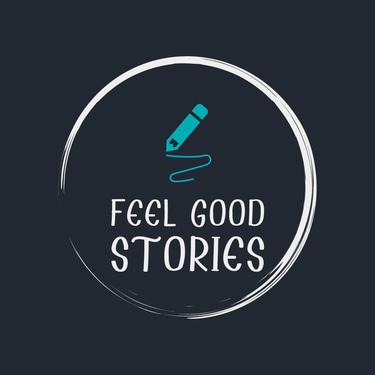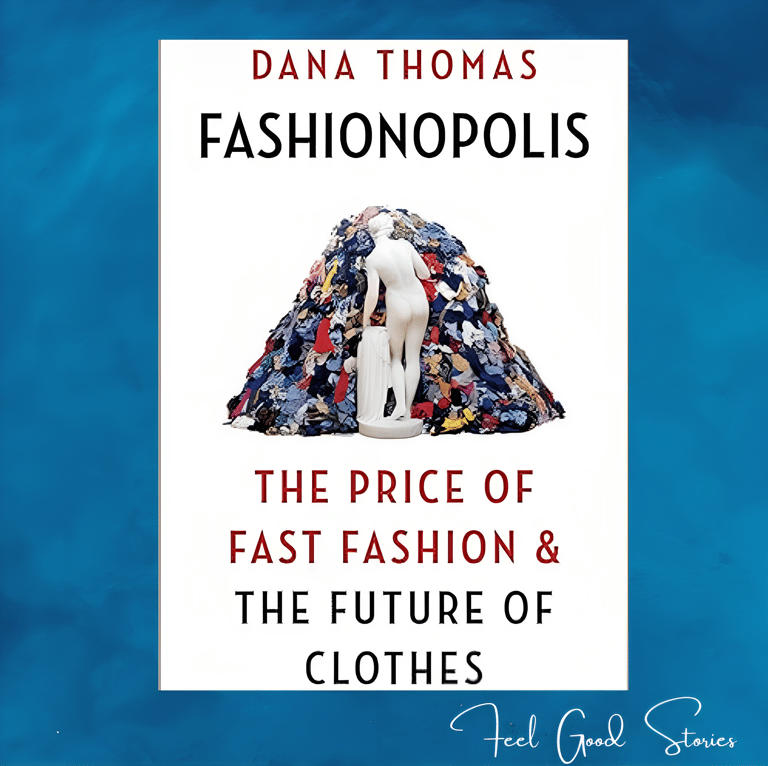Fashionopolis by Dana Thomas
Navigating the Future of Ethical Fashion

Hello, everyone! It's me, Swathi Udupa from Feel Good Stories. I am here with a book review of "Fashionopolis - The Price of Fast Fashion and the Future of Clothes"
In recent years, the fashion industry has come under intense scrutiny for its exploitation of labor, environmental degradation, and disregard for intellectual property laws. The high cost of fast fashion has been well-documented, and the consequences of this unsustainable approach are now impossible to ignore. In her book, "Fashionopolis: The Price of Fast Fashion and the Future of Clothes," Dana Thomas delves into the dark underbelly of the fashion world while also shining a spotlight on emerging technologies that hold the promise of making fashion more sustainable and environmentally friendly.
At first glance, one might wonder if yet another book on the perils of the fashion industry is necessary. After all, documentaries like "The True Cost" and books like Elizabeth Cline's "Overdressed" have already laid bare the industry's dirty laundry. However, what sets "Fashionopolis" apart is its unique approach and its ability to inspire change from a place of inspiration rather than guilt.
The book is structured into three distinct parts, each offering a different perspective on the fashion industry's challenges and potential solutions. Thomas takes the reader on a journey through the world of fast fashion, its exploitation of labor, and its environmental impact. While this part of the book might cover familiar ground for those well-versed in the fashion industry's issues, Thomas's storytelling approach makes it engaging and relatable. She presents the fashion system as a human-created entity, intricately woven into the fabric of the global economy, rather than a faceless boogeyman.
The second part of the book introduces us to the pioneers of change in the industry. Through interviews with designers like Natalie Chanin and various artisanal and small-scale fashion producers, Thomas reveals how these individuals and businesses are striving to create ethical, sustainable, and environmentally responsible fashion. Their innovative use of technology and a mix of old and new knowledge shows that change is possible within the industry.
One of the book's strengths is its ability to make you pause and explore the brands and businesses it highlights. It's not just a critique of the fashion industry but a guide to discovering and supporting ethical and sustainable fashion. The reader might find themselves browsing websites and bookmarking brands like Alabama Chanin and Momotaro, or researching technologies like Jeanologia, which can significantly reduce the environmental impact of distressed denim.
The final part of the book delves into the efforts being made within the current fashion system to mitigate its negative impacts. Fashion lending companies, fully automatic sewing machines, and recyclable garments are just a few of the strategies explored. What unites these solutions is their acknowledgment of the insatiable and unstoppable consumer demand for new styles. The goal isn't to change this behavior but to reduce its harm, and this pragmatic approach is refreshingly realistic.
One aspect that may leave some readers wanting more is the book's relatively abrupt conclusion. It's just a two-page ending in the last chapter, but on reflection, this conciseness seems fitting. "Fashionopolis" doesn't offer a one-size-fits-all solution to the complex question of how to participate in fashion sustainably and ethically. Instead, it presents a range of options that readers can mix and match according to their individual preferences and needs.
In many ways, "Fashionopolis" reads like Michael Pollan's "The Omnivore's Dilemma" for the fashion industry. Both books use storytelling as a powerful tool to inspire change, encouraging readers to consider how their consumption habits impact the world. Rather than overwhelming readers with guilt, "Fashionopolis" empowers them to make informed choices about their clothing purchases and to support brands that align with their values.
The book also serves as a valuable reference for sustainable and ethical fashion brands. While the list is extensive, it's clear that Thomas has done her research, providing a resource for those who wish to support brands like Levi's, Alabama Chanin, Stella McCartney, or Rent the Runway.
Book Review - Fashionopolis by Dana Thomas
Genre: Fashion Art, Juvenile Nonfiction, Self help books, Slow Fashion
Related Topics:
~ Wide Canvas by Anil Annaiah
~ Stumbling on Happiness by Daniel Gilbert
~ Entangled Life by Merlin Sheldrake
~ Thinking, Fast & Slow by Daniel Kahneman
~ Fashionopolis by Dana Thomas
~ The Power of Habit by Charles Duhigg
~ Blissful Euphoria by Swathi A udupa
~ A Comprehensive Guide to Setting Up Google AdSense for Online Revenue
In conclusion, "Fashionopolis" by Dana Thomas offers a comprehensive exploration of the current state of the fashion industry and its potential for change. It provides readers with an understanding of the industry's problems while also highlighting the innovators working to create a more sustainable future. This book is not just for fashion enthusiasts but for anyone who wants to make more ethical and environmentally conscious choices in their clothing consumption. By offering a range of options and inspiring change from a place of hope, "Fashionopolis" is a compelling and necessary addition to the literature on the fashion industry's challenges and opportunities.




